We got our Pro team together to give you some tips on how to use an angle grinder from basics to some advanced techniques and shortcuts. Angle grinders are controlled by either a trigger, paddle, or switch. They spin a disc at an incredible rate of speed for the express purpose of sanding, grinding, or cutting.
Due to the rapid advancements in lithium-ion battery technology, the many angle grinder uses have expanded dramatically. This makes it a versatile tool used by a wide range of professionals. With so much flexibility at your disposal, the angle grinder also has a steep learning curve compared to many other tools.
Table of Contents
- 1 – When Using an Angle Grinder, Protect Yourself!
- 2 – Angle Sparks Away from Your Body
- 3 – When Surface Grinding and Using Flap Discs
- 4 – How to Hold an Angle Grinder When Using Cutting Wheels
- 5 – Using a Grinder for Light Work or Sanding
- 6 – Your Accessories Need to Match the RPM of the Grinder
- Additional Pro Tips on How to Use an Angle Grinder
1 – When Using an Angle Grinder, Protect Yourself!
Before you use an angle grinder, you’ll want to grab some personal protection gear. The reality of the angle grinder is that it’s a loud tool that kicks a whole lot of debris around. Plus, you’re not always grinding or polishing. Oftentimes, the job entails cutting. If you get sloppy with a cutting wheel or simply have bad luck, that wheel could turn into high-speed shrapnel.
For these reasons, you’ll do yourself a favor if you grab some hearing protection, long sleeves, gloves, and something to shield your entire face. You don’t want to take a hot shard of cut-off wheel to the moneymaker, after all.
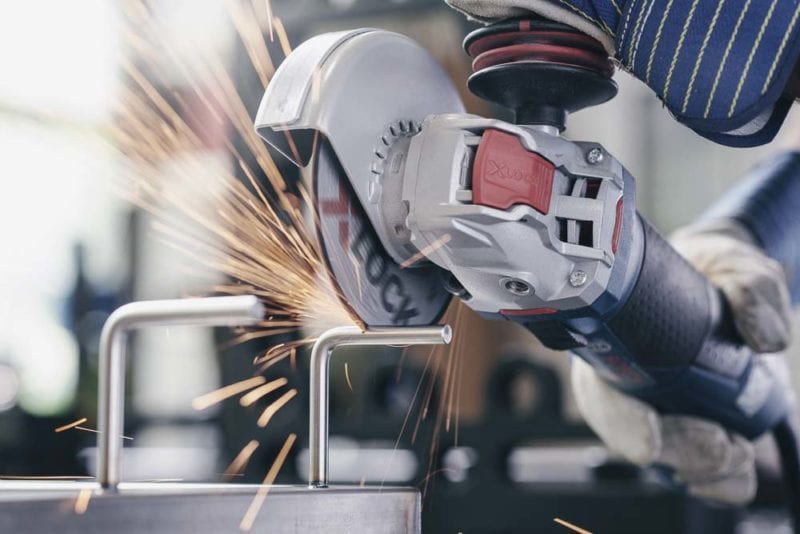
Pro Tip: Having a cutting wheel fly apart on you at 10,000 RPM is no joke. There’s nothing you can do when it happens. As a result, you want to always wear a full face shield when using a cutting wheel—even when using a guard. Grinding and using a flap disc don’t typically present the same level of danger, so the guard and adequate eye protection are often enough.
2 – Angle Sparks Away from Your Body
Because angle grinders quickly remove lots of material, lower the risk as much as possible by positioning the tool properly. Using an angle grinder in different applications and with certain attachments calls for different angles. Ensuring sparks and debris fly away from your body reduces your chances of getting injured. Your work clothes will last longer, too!
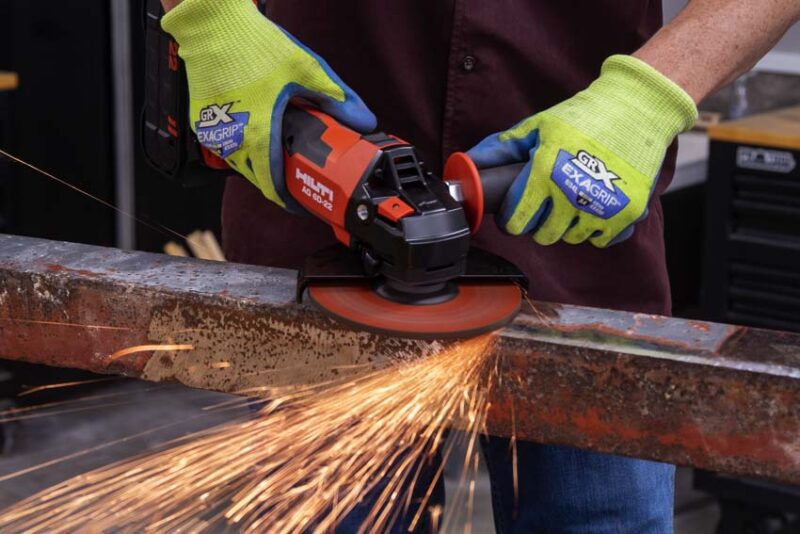
3 – When Surface Grinding and Using Flap Discs
For surface grinding, use the flat part of the wheel, maintaining a 20°-30° angle between the tool and the work surface. Position the blade guard at the back toward your body. Use a smooth back-and-forth motion to guide the flap disc over the material. Let the wheel do the work, but feel free to apply enough pressure to ensure you’re being productive.
You can really grind down welds quickly in preparation for painting using this method.
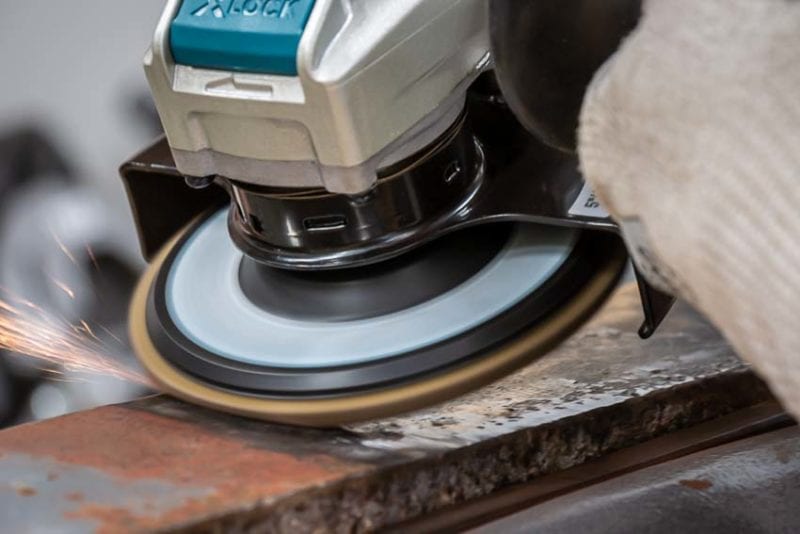
4 – How to Hold an Angle Grinder When Using Cutting Wheels
You should tackle cutting straight on since you want to use the edge of your wheel to cut into the work surface. Be careful not to bend the cutting wheel in any direction. In this mode, the guard always goes on top to protect you from debris. Wearing a face shield also protects you against premature disc failure. And remember—if the guard isn’t between the cutting disc and your face—move it until it is.
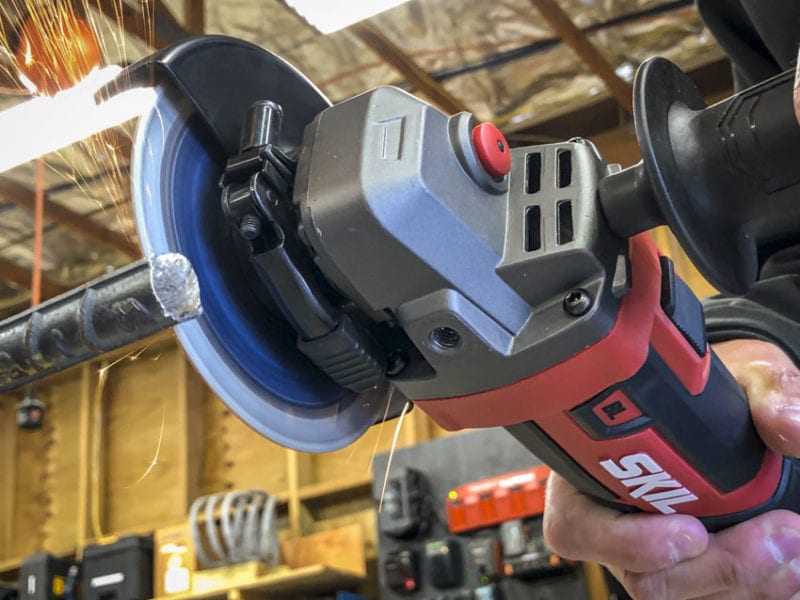
5 – Using a Grinder for Light Work or Sanding
For sanding applications, hold the tool at a 5°-10° angle to the work surface. For pretty much all grinder applications, apply only minimum pressure. You want to let the tool and the abrasive accessory do the hard work.
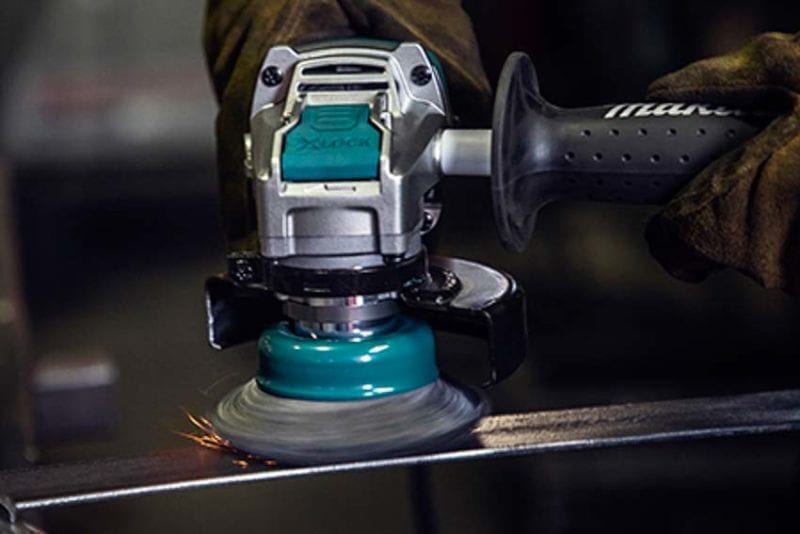
6 – Your Accessories Need to Match the RPM of the Grinder
Check the manufacturer’s specs when attaching your wheel, disc, or cup. The max RPM on the accessory should meet or exceed the max RPM of the grinder you plan to use. If the rated speed of the accessory is lower than your grinder, you run the risk of the wheel flying apart.
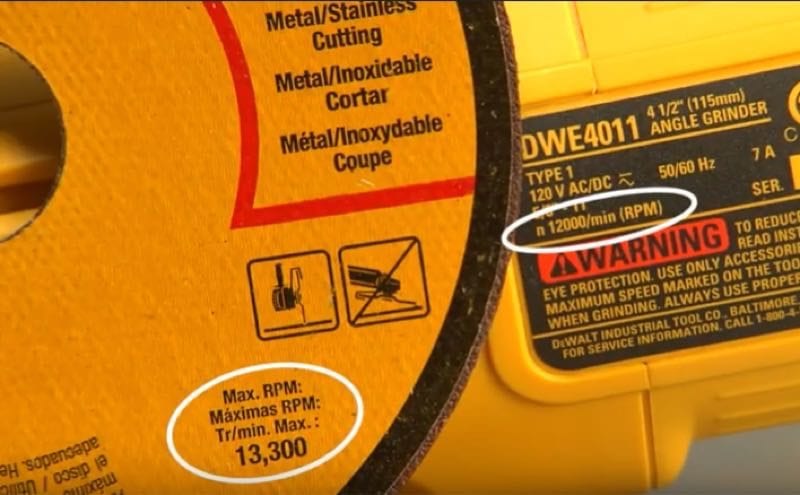
Additional Pro Tips on How to Use an Angle Grinder
- Before applying the grinder to the work surface, allow the tool to reach full speed. You’ll do a better job of keeping your cuts and grinds consistent.
- For grinding and sanding applications, keep the tool moving so as to avoid gouges just like you do with a sander. You’ll end up with much smoother and more professional results.
- Some grinders have lock-on switches. These have the potential to come on whenever they receive power. That means that if you swap out a battery, attach an extension cord, or reset a breaker, you want to make a habit of turning the grinder off first. Some grinders have a built-in “zero voltage” safety to avoid kicking on automatically, but not all do. This is a great safety feature.
- Make sure everything stops spinning before setting the angle grinder down. Even a lightly spinning blade can damage work surfaces and grab loose clothing. A braking grinder (grinder with an electric or mechanical braking system) really helps avoid these problems.
- Occasionally, you’ll want to remove the guard when it gets in the way. Many Pros have at least one story about a cutting wheel shattering. Most shrouds rotate to make life a little easier. Most of these tools spin at over 10,000 RPM. In general, you want to keep that guard on no matter what!
If you’ve got any additional tips or tricks on how to use an angle grinder, feel free to leave a comment below.

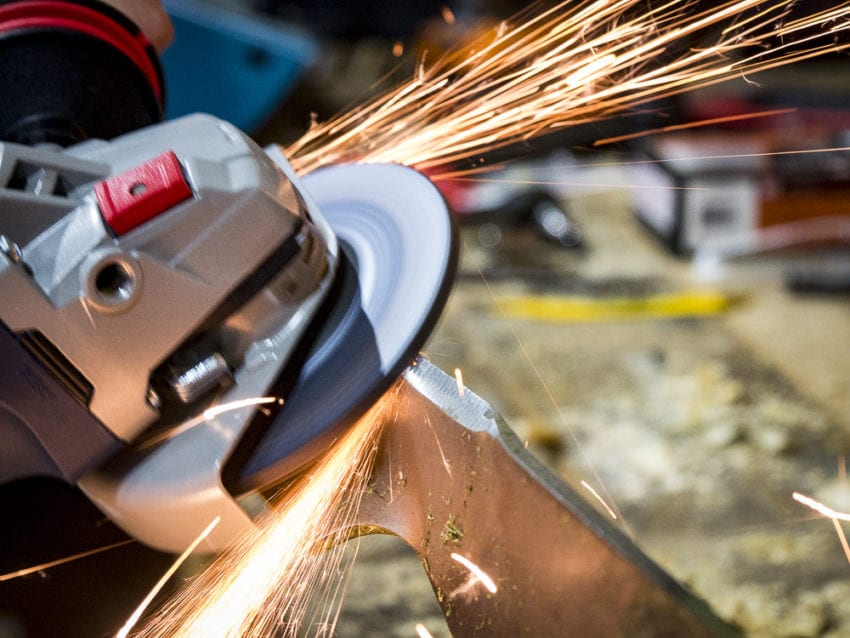
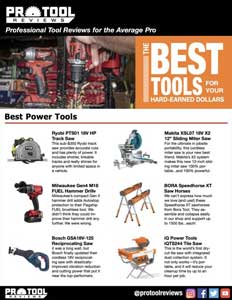


the picture of cutting rebar is showing a dangerous practice. if the blade grabs, it will be jammed deeper into the cut kicking back toward the operator and likely breaking the cutting wheel. Always hold the grinder so the blade will be pulled out of the cut and away from the operator.
If speed of cutting isn’t critical, don’t force the grinder in, let the weight of it do the work. You’ll be safer, get a better cut, and a greatly extended disc life.